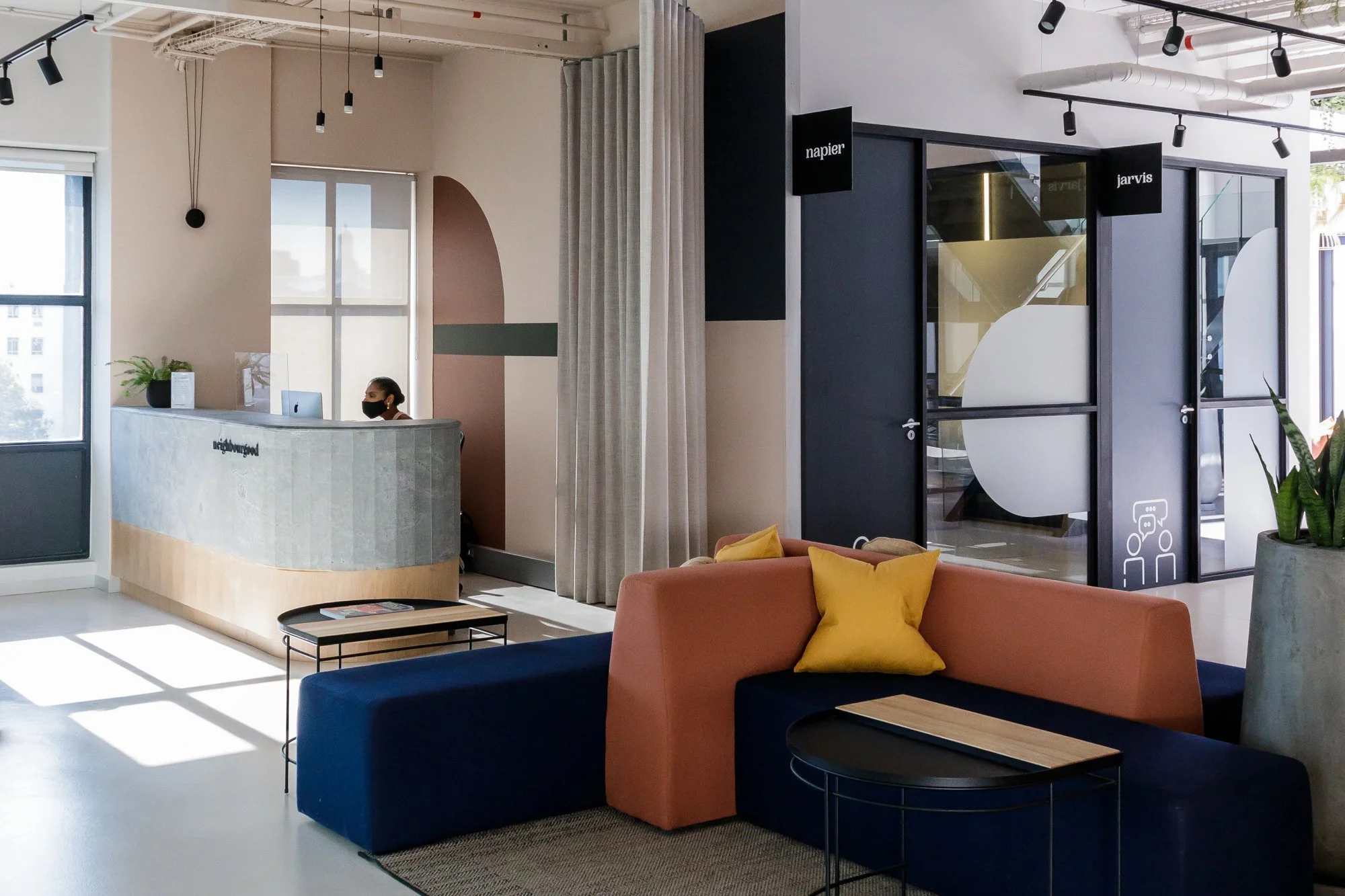Building tomorrow from yesterday: The rise of adaptive reuse in South African property development
Ever heard of adaptive reuse? If you haven’t, you’ve probably seen it at least once without realising it. It's a concept in property development where instead of tearing down old buildings, they’re redesigned with a whole new purpose. Think of it like recycling, but for architecture!
At Neighbourgood, we’re big fans of adaptive reuse (in case you couldn’t already tell). So let's dive into why adaptive reuse is such a game-changer and check out some cool examples from the Neighbourgood stable.
So, what's the deal with adaptive reuse?
Imagine taking an old office building or a house, renovating or redeveloping it, giving it new life and turning it into something completely different. That's adaptive reuse in a nutshell. It's like giving a building a second chance at life, and boy, does it make a difference.
A peek at some of our favourite Neighbourgood adaptive reuse projects:
Neighbourgood Bree St: Office space? Nah, let's make it a hangout spot
Remember that boring grey office block? Well, now it's a buzzing coworking space where creatives and entrepreneurs come together to work their magic. Set around a beautiful outdoor courtyard in the middle of the space, and a cafe at the back, Neighbourgood Bree is where coffee and collaboration come together.
Neighbourgood 1st Crescent: Small house, big dreams
This one's a real Cinderella story. We turned a modest three-bedroom home in Camps Bay into a charming thirteen-bedroom guest house that's now bustling with people and good vibes.
Neighbourgood East City & Neighbourgood Newlands: Hotels? Nah, we're going hybrid
We saw the writing on the wall for traditional hotels, so we gave both of these traditional hotel spaces a makeover. Now, they're all about community, and hybrid stays, where travellers can stay for 1 night or 3 months, and connect and feel right at home.
Neighbourgood Cape Quarter Workspace: Who needs cubicles when you've got coworking?
Say goodbye to stuffy offices and hello to a fresh take on workspaces. We turned a dull corporate space into a vibrant coworking hub, where ideas flow as freely as the coffee.
Neighbourgood Hill: Guest house goes glam
Last but not least, we took this old guest house and gave it a serious upgrade. Now, it's a trendy hybrid hotel with a café that's the talk of the town. Who says you can't teach an old building new tricks?
Neighbourgood Reserve: Bye-bye office, hello aparthotel vibes
We took this five-storey old office space (previously a historical building used for the African Banking Corporation) and transformed it into a mix of gorgeous New York-style loft apartments. The redevelopment of an historical building isn't easy, but with a great professional team on our side and lots of hard work, we gave this building a new lease on life.
The balancing act: Cost vs. benefit
It's essential to approach adaptive reuse projects with a dose of realism. While the idea of breathing new life into old buildings is enticing, not every project will be a financial slam dunk.
It's crucial to assess the feasibility and ensure that the numbers add up. Look for opportunities in areas where redevelopment is actively encouraged, such as urban revival projects, or where recent changes in zoning regulations incentivise reuse. These initiatives aim to combat urban decay by promoting investment in designated areas and properties, thus preserving existing infrastructure while stimulating economic growth.
Why it matters
Despite the challenges, adaptive reuse is gaining traction for a reason. It's not just about saving money; it's about creating vibrant, sustainable communities while preserving the unique character of our cities.
For forward-thinking landlords and developers, adaptive reuse presents a compelling option that aligns with both economic and environmental goals. By breathing new life into neglected spaces, we're not just changing buildings - we're reimagining entire neighbourhoods.
In a reality where resources are finite and the need for sustainable solutions is paramount, adaptive reuse is a beacon of innovation. In South Africa and beyond, it's a trend that's here to stay. So, to all the visionary investors and developers out there, take a second look at those forgotten buildings and abandoned projects. With a little imagination and a lot of determination, there's a world of opportunity waiting to be unlocked.






